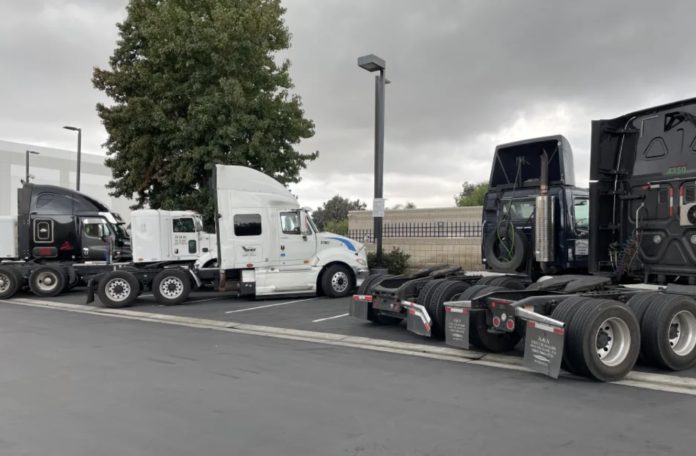As the administration works to alleviate congestion at ports on the west coast amid calls of a trucker shortage, at least one driver has spoken up to say ‘it’s not us.’
Carlos Rameriz, a trucking veteran of 25-years, recently spoke with Yahoo to give his own perspective on the port situation. In a nutshell: it’s not the truck drivers.
Rameriz says that most drivers are very willing to work right now, and snared shipments are not for lack of drivers waiting to pick up a load. In fact, Rameriz says that he hasn’t seen anything change since Biden directed the ports to move to 24/7 operations.
“There’s a lot of us that are willing to work,” Rameriz said. “I don’t know anybody that is working 24/7. If there was work, we [would] be working 24/7,” adding that blaming a driver shortage for current backups is “the biggest excuse” and just “not true.”
In fact, Rameriz says that he’s actually getting fewer loads from the port, and therefore making less money. According to him, drivers are waiting more than three hours to get inside of the port to pick up a container, sometimes longer.
“It’s been the worst month I ever had. There’s no work. They’re not releasing anything from [the port],” said Rameriz. “That’s what pays my bills.”
Rameriz says that drivers are at the mercy of the longshoremen who offload the cargo containers, and at least one longshoreman, who identified himself only as Alfred, agrees that more blame should be put on the longshoremen than the truck drivers.
Alfred says that the Pacific Maritime Association is “cutting the work.”
“They’re the ones who are not training: skilled positions,” Alfred said. “[That] means crane operators, top handler drivers, trans drivers. They’re the ones who are keeping the ships out there at sea anchored. We have the manpower there, [they] just keep cutting the work.”
An even bigger, more obvious issue creating the port congestion is simply a matter of space – because of the labor bottleneck, not enough cargo is being hauled away, so there is no room to offload the cargo from the ships. Mix in the fact that these containers are not interchangeable and need to be returned to specific locations, and the issue of storage space for containers really gets bad.
“There are truck drivers that come in and are waiting for a chassis and the company does not allow us to give them it,” Alfred said.
“If we don’t have the space and we need to get some of this cargo out, why are we holding chassis, and not giving them to the drivers so they could pick up their load to make more space for us,” he added.
“The drivers are there, literally for hours and hours, and sometimes [they] don’t even pick up a load.”
In response to the storage issue, the City of Long Beach recently announced that they will relax the current container stacking rules limiting stacks to only two containers for at least 90 days. Now, as many as four containers, with an allowance for stacks of five if approved, can be stacked at a time in hopes that this will alleviate some of the storage woes plaguing the ports and trucking yards in the area.
“It’s getting bad,” said Rameriz. “I hope somebody is keeping an eye on what’s going on and do something about it because everybody’s struggling right now.”
